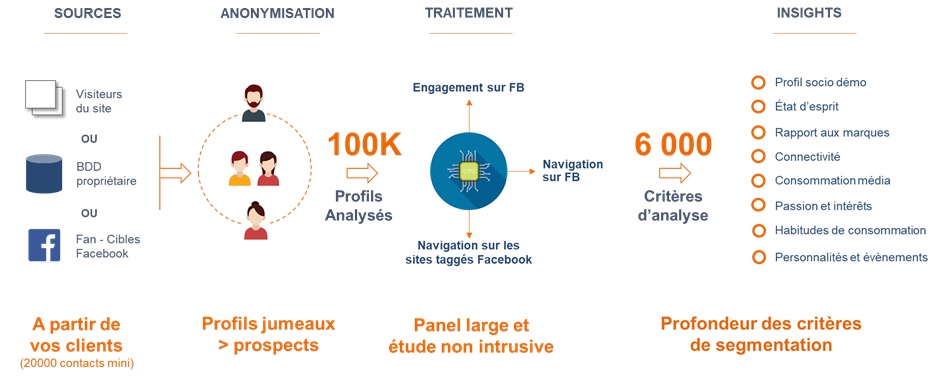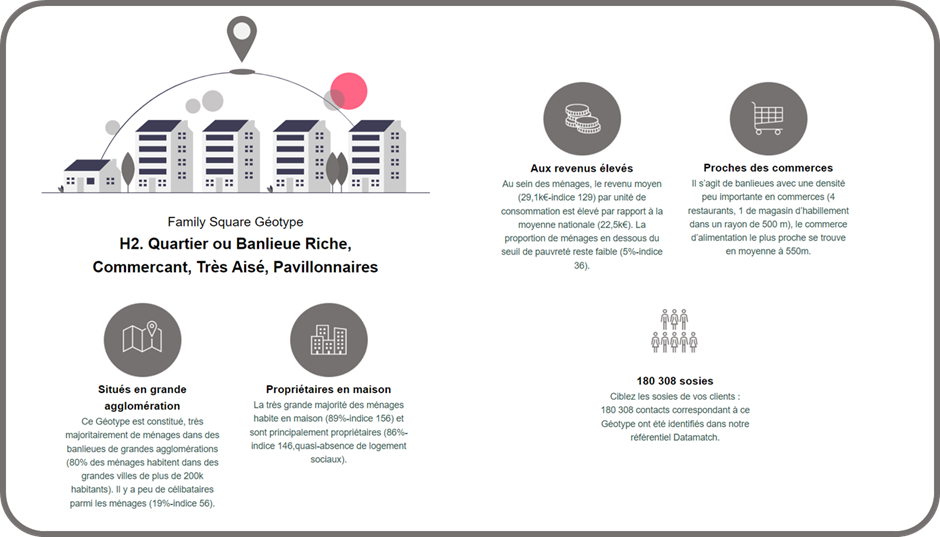What is audience profiling?
Audience profiling, or audience profiling, consists of qualifying a target population with socio-demographic data, centers of interest, affinities, or consumer behavior. Audience profiling is based on a set of techniques that make it possible to get to know an audience better.
Audience profiling is particularly useful in marketing, since knowing your target is what allows you to better know your customers or consumers, and thus adapt offers and communication strategy.
Profiling can take the form of an overall analysis of the audience, the definition of segments (“personae” types), or even a more in-depth knowledge of its customers on an individual basis.
The different types of audience profiling for marketing
If the principle of audience profiling is clear – getting to know a target of customers or consumers better – different tools can be used to perform profiling. The techniques vary, and the possibilities they offer in terms of marketing use cases can be very different.
Social listening
Social listening consists of capturing data from conversations on social platforms (social networks, forums) by focusing on specific communities, themes or brand campaigns. This makes it possible to trace associations between subjects, to evaluate the tone of conversations around these subjects, and thus to better understand the centers of interest of a target.
Social listening thus allows another form of profiling, consisting in better understanding the centers of interest and the content on which an audience expresses itself.
Examples of use cases in marketing are:
- the definition of an editorial communication plan, with the content to be produced, the events to be favored in the editorial calendar
- the choice of subjects or territories of expression for a brand
- the choice of partners with which a brand can associate within the framework of co-branding operations
- identification of the most powerful media or influencers to reach the brand target






